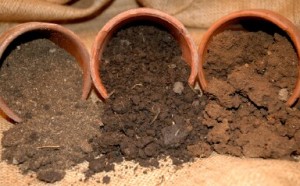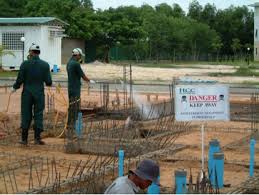There are several ways to contaminate the soil. While all sorts of people contribute to it (yes, even you!), the biggest culprits are still the large companies and manufacturing industries. Here, you have the likes of building construction companies, water treatment facilities, and of course, manufacturing plants. All of them are suspects in releasing hazardous and very harmful chemicals into the environment. Their first victim: the soil.
 The effects of contaminants and pollutants to the environment as a whole are staggering. But those effects, regardless of being on land, air, or water will all in wall affect the soil eventually.
The effects of contaminants and pollutants to the environment as a whole are staggering. But those effects, regardless of being on land, air, or water will all in wall affect the soil eventually.
Soil contamination by definition is a process wherein pollutants are trapped within the soil’s composition. That’s why in many contaminated soil disposal Sydney methods, there’s always that possibility that the soil affected will be completely disposed of. Majority of soil types are made up of different organic and inorganic materials. Various soil textures like sand, silt, as well as clay have varying rates or levels of absorbing contaminants. The contaminants meanwhile will come in different forms, too. And they can either be organic or inorganic.
We visited an asbestos removal Sydney facility and found out that man-made chemicals and the alteration of the ecosystem in the soil are the two biggest sources of contamination. The list of culprits that is likely to affect the soil’s composition and eventually contaminate it is pesticides, hydrocarbons, solvents, and heavy metals. If you’re living in an industrialized area where there are many manufacturing plants, you should know that there is an increasing number of industries using pesticides, landfills, and underground tanks intended for chemical storage. While these practices are legal and have permits, they will always be providing a potential risk of soil contamination. In most instances, materials will be spilled directly into the soil or will be carried by water. There are also scenarios when contaminants are delivered through air via smoke stack emissions.
The Different Types of Soil Contamination
Infiltration – This is a type of contamination where the ground surface water infiltrates the soil, bringing with it the contaminant. This one can be addressed by way of contaminated soil treatment Sydney. The rate of the infiltration will mostly depend on the type of soil as well as amount of water.
 Surface Runoff – Because of the increasing number of structures in urban areas like buildings, concrete roads, and pavements, there’s what we call as surface runoff of water. So when snow and rain drop, the water will gather pollutants, form streams, and then lead soil contamination. The most common things runoff water picks up are petroleum, asbestos, hard metals and fertilizer. The same can be addressed by asbestos removal Sydney and other methods intended to keep the soil free from contaminants.
Surface Runoff – Because of the increasing number of structures in urban areas like buildings, concrete roads, and pavements, there’s what we call as surface runoff of water. So when snow and rain drop, the water will gather pollutants, form streams, and then lead soil contamination. The most common things runoff water picks up are petroleum, asbestos, hard metals and fertilizer. The same can be addressed by asbestos removal Sydney and other methods intended to keep the soil free from contaminants.
Brownfield Land – This term refers to lands or areas that have been abandoned, formerly used as industrial and manufacturing facilities. They have been abandoned because they caused a significant environmental damage, which at the time of the abandonment, wasn’t sufficiently solved by contaminated soil disposal Sydney or other cleaning up methods. These areas usually have low concentrations of soil contaminants as well as hazardous waste. But the fact is the soil will be expected to contain heavy metal particles, solvents, and other stuff that may be quite difficult to deal with using contaminated soil treatment Sydney.